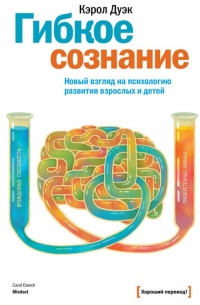Ознакомительная версия. Доступно 12 страниц из 59
The Liking Gap in Conversations: Do People Like Us More Than We Think? Psychological Science, 29(11), 1742–1756. https://doi.org/10.1177/0956797618783714.
Eisenberger, N. I., Lieberman, M. D., & Williams, K. D. (2003). Does rejection hurt? An FMRI study of social exclusion. Science (New York, N.Y.), 302(5643), 290–292. https://doi.org/10.1126/science.1089134.
Sturgeon, J. A., & Zautra, A. J. (2016). Social pain and physical pain: Shared paths to resilience. Pain Management, 6(1), 63–74. https://doi.org/10.2217/pmt.15.56.
De Ridder, D., Adhia, D., & Vanneste, S. (2021). The anatomy of pain and suffering in the brain and its clinical implications. Neuroscience & Biobehavioral Reviews, 130, 125–146. https://doi.org/10.1016/j.neubiorev.2021.08.013.
Verhallen, A. M., Renken, R. J., Marsman, J.-B. C., & ter Horst, G. J. (2021). Working Memory Alterations After a Romantic Relationship Breakup. Frontiers in Behavioral Neuroscience, 15, 657264. https://doi.org/10.3389/fnbeh.2021.657264.
Orr, C., & Hester, R. (2012). Error-related anterior cingulate cortex activity and the prediction of conscious error awareness. Frontiers in Human Neuroscience, 6, 177. https://doi.org/10.3389/fnhum.2012.00177.
Song, H., Zou, Z., Kou, J., Liu, Y., Yang, L., Zilverstand, A., d’Oleire Uquillas, F., & Zhang, X. (2015). Love-related changes in the brain: A resting-state functional magnetic resonance imaging study. Frontiers in Human Neuroscience, 9, 71. https://doi.org/10.3389/fnhum.2015.00071.
Grebe, N. M., Kristoffersen, A. A., Grøntvedt, T. V., Emery Thompson, M., Kennair, L. E. O., & Gangestad, S. W. (2017). Oxytocin and vulnerable romantic relationships. Hormones and Behavior, 90, 64–74. https://doi.org/10.1016/j.yhbeh.2017.02.009.
Weiskittle, R. E., & Gramling, S. E. (2018). The therapeutic effectiveness of using visual art modalities with the bereaved: A systematic review. Psychology Research and Behavior Management, 11, 9–24. https://doi.org/10.2147/PRBM.S131993.
Tseng, J., & Poppenk, J. (2020). Brain meta-state transitions demarcate thoughts across task contexts exposing the mental noise of trait neuroticism. Nature Communications, 11, 3480. https://doi.org/10.1038/s41467-020-17255-9.
Primack, B. A., Shensa, A., Sidani, J. E., Whaite, E. O., Lin, L. yi, Rosen, D., Colditz, J. B., Radovic, A., & Miller, E. (2017). Social Media Use and Perceived Social Isolation Among Young Adults in the U.S. American Journal of Preventive Medicine, 53(1), 1–8. https://doi.org/10.1016/j.amepre.2017.01.010.
Riehm, K. E., Feder, K. A., Tormohlen, K. N., Crum, R. M., Young, A. S., Green, K. M., Pacek, L. R., La Flair, L. N., & Mojtabai, R. (2019). Associations Between Time Spent Using Social Media and Internalizing and Externalizing Problems Among US Youth. JAMA Psychiatry, 76(12), 1266–1273. https://doi.org/10.1001/jamapsychiatry.2019.2325.
Lustenberger, C., Boyle, M. R., Foulser, A. A., Mellin, J. M., & Fröhlich, F. (2015). Functional role of frontal alpha oscillations in creativity. Cortex, 67, 74–82. https://doi.org/10.1016/j.cortex.2015.03.012.
Westbrook, A., Ghosh, A., van den Bosch, R., Määttä, J. I., Hofmans, L., & Cools, R. (2021). Striatal dopamine synthesis capacity reflects smartphone social activity. iScience, 24(5), 102497. https://doi.org/10.1016/j.isci.2021.102497.
Ruffino, C., Truong, C., Dupont, W., Bouguila, F., Michel, C., Lebon, F., & Papaxanthis, C. (2021). Acquisition and consolidation processes following motor imagery practice. Scientific Reports, 11(1), 2295. https://doi.org/10.1038/s41598-021-81994-y.
Monany, D. R., Lebon, F., Dupont, W., & Papaxanthis, C. (2022). Mental practice modulates functional connectivity between the cerebellum and the primary motor cortex. iScience, 25(6). https://doi.org/10.1016/j.isci.2022.104397.
Son, S. M., Yun, S. H., & Kwon, J. W. (2022). Motor Imagery Combined With Physical Training Improves Response Inhibition in the Stop Signal Task. Frontiers in Psychology, 13. https://www.frontiersin.org/journals/psychology/articles/10.3389/fpsyg.2022.905579.
Iding, A. F. J., Kohli, S., Dunjic Manevski, S., Sayar, Z., Al Moosawi, M., & Armstrong, P. C. (2023). Coping with setbacks as early career professionals: Transforming negatives into positives. Journal of Thrombosis and Haemostasis, 21(7), 1689–1691. https://doi.org/10.1016/j.jtha.2023.04.019.
Hariri, A. R., Brown, S. M., Williamson, D. E., Flory, J. D., de Wit, H., & Manuck, S. B. (2006). Preference for Immediate over Delayed Rewards Is Associated with Magnitude of Ventral Striatal Activity. The Journal of Neuroscience, 26(51), 13213–13217. https://doi.org/10.1523/JNEUROSCI.3446-06.2006.
Kox, M., van Eijk, L. T., Zwaag, J., van den Wildenberg, J., Sweep, F. C. G. J., van der Hoeven, J. G., & Pickkers, P. (2014). Voluntary activation of the sympathetic nervous system and attenuation of the innate immune response in humans. Proceedings of the National Academy of Sciences, 111(20), 7379–7384. https://doi.org/10.1073/pnas.1322174111.
Flores-Kanter, P. E., Moretti, L., & Medrano, L. A. (2021). A narrative review of emotion regulation process in stress and recovery phases. Heliyon, 7(6), e07218. https://doi.org/10.1016/j.heliyon.2021.e07218.
Hoge, E. A., Bui, E., Palitz, S. A., Schwarz, N. R., Owens, M. E., Johnston, J. M., Pollack, M. H., & Simon, N. M. (2018). The effect of mindfulness meditation training on biological acute stress responses in generalized anxiety disorder. Psychiatry Research, 262, 328–332. https://doi.org/10.1016/j.psychres.2017.01.006.
Ryan, M., & Ryznar, R. (2022). The Molecular Basis of Resilience: A Narrative Review. Frontiers in Psychiatry, 13. https://www.frontiersin.org/journals/psychiatry/articles/10.3389/fpsyt.2022.856998.
Danvers, A. F., Efinger, L. D., Mehl, M. R., Helm, P. J., Raison, C. L., Polsinelli, A. J., Moseley, S. A., & Sbarra, D. A. (2023). Loneliness and time alone in everyday life: A descriptiveexploratory study of subjective and objective social isolation. Journal of Research in Personality, 107, 104426. https://doi.org/10.1016/j.jrp.2023.104426.
Mueller, C. M., & Dweck, C. S. (1998). Praise for intelligence can undermine children’s motivation and performance. Journal of Personality and Social Psychology, 75(1), 33–52. https://doi.org/10.1037/0022-3514.75.1.33.
Mangels, J. A., Butterfield, B., Lamb, J., Good, C., & Dweck, C. S. (2006). Why do beliefs about intelligence influence learning success? A social cognitive neuroscience model. Social Cognitive and Affective Neuroscience, 1(2), 75–86. https://doi.org/10.1093/scan/nsl013.
Ehrlinger, J., Mitchum, A. L., & Dweck, C. S. (2016). Understanding overconfidence: Theories of intelligence, preferential attention, and distorted self-assessment. Journal of Experimental Social Psychology, 63, 94–100. https://doi.org/10.1016/j.jesp.2015.11.001.
Gál, É., Tóth-Király, I., & Orosz, G. (2022). Fixed Intelligence Mindset, Self-Esteem, and Failure-Related Negative Emotions: A Cross-Cultural Mediation Model. Frontiers in Psychology, 13, 852638. https://doi.org/10.3389/fpsyg.2022.852638.
Chen, L., Chang, H., Rudoler, J., Arnardottir, E., Zhang, Y., de los Angeles, C., & Menon, V. (2022). Cognitive training enhances growth mindset in children through plasticity of cortico-striatal circuits. Npj Science of Learning, 7(1), 1–10. https://doi.org/10.1038/s41539-022-00146-7.
Koblinsky, N. D., Meusel, L.-A. C., Greenwood, C. E., & Anderson, N. D. (2021). Household physical activity is positively associated with gray matter volume in older adults. BMC Geriatrics, 21(1), 104. https://doi.org/10.1186/s12877-021-02054-8.
Won, E., & Kim, Y.-K. (2020). Neuroinflammation-Associated Alterations of the Brain as
Ознакомительная версия. Доступно 12 страниц из 59



















